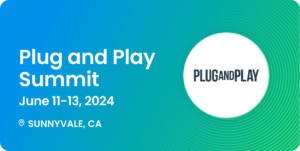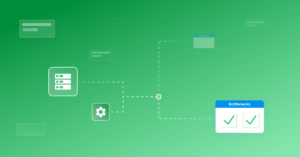Keeping an eye on your applications is the best way to stay ahead of slowdowns and vulnerabilities
The Uptime Institute’s 2023 Outage Analysis found that over 60% of failures result in at least $100,000 in total losses, up substantially from 39% in 2019. These findings reflect the impact of software-related issues on application downtime. They also underscore the importance of effective monitoring practices to mitigate such risks.
As any DevOps engineer can tell you, designing and deploying a great application is only the beginning. If you’re going to expect top application performance, you’ll need to maintain and improve it over time. That’s where application performance monitoring comes in. These tools allow you to keep an eye on your app’s performance and security. They can provide a heads-up when your app slows down. They can also warn you when vulnerabilities appear and help you stay one step ahead of issues that might affect your end user satisfaction.
There is, of course, a best practice for each specific form of real user monitoring. These move from database monitoring tools to a web application monitoring tool. To get the most out of any of them, your team should follow these application monitoring best practices. With the right approach and policies, you can position your performance monitoring efforts for continued success.
Key Takeaways
- To be effective, an application manager has to be grounded in well-defined performance, security, and compliance objectives as well as user interactions.
- Focusing on the right metrics helps DevOps teams respond quickly to high-priority issues without being overwhelmed by unnecessary noise.
- As applications grow in complexity, automation and team-wide visibility become essential, and these capabilities allow teams to proactively maintain performance and improve security posture, as well as collaboration.
5 Best Practices for Application Monitoring
1. Establish Clear Goals
The first step toward success is defining it. That’s as true for application monitoring as it is for infrastructure monitoring or any other project. To get the most out of your monitoring efforts, you need to set goals based on quantifiable metrics and key indicators. Yes, you need an application monitoring strategy as one of your best practices. This will help track user behavior, user interactions, application behavior, and user satisfaction.
Cloud application monitoring best practices dictate two areas of focus: performance issues and security monitoring. How well does your app run? How well protected is it against unauthorized access? Seek out industry benchmarks to help you set concrete targets for each of these areas of focus. Knowing what your competitors aim for can help you rise to their level (or surpass it).
If you work in a regulated environment such as healthcare, you might also consider compliance an area of focus. How do your security measures stack up against industry standards? These goals are somewhat easier to define, as standards from SOC 2 to PCI DSS lay out what your app must demonstrate to meet their requirements.
No matter what your goals are, you’ll need a strategy to reach them. What steps will you take to meet the numbers you’ve targeted?
2. Target the Appropriate Metrics
Monitoring every single possible metric would require an enormous investment of time and energy. And the results would be overwhelming in scale. Trying to track everything is a great way to track nothing.
But there is good news: Your app is unique. It may have similarities to other apps, but your use case is specifically yours. Why is that good? Because it means you can decide which metrics matter for your app. That lets you set priorities around which ones to:
- Track closely
- Keep broad tabs on
- Safely disregard in the course of typical work
When you winnow down the metrics to what truly matters, your team can work much more efficiently.
To find your metrics, start by assessing the usual suspects in your industry. Common performance metrics include:
- Usage rates
- Error rates
- Response times
- Request rates
- User satisfaction and experience data
Meanwhile, security metrics often begin with the following:
- Number of known vulnerabilities
- Average vulnerability age
- Average time to fix
It’s critical to continuously collect and analyze this performance data. That way, you can take a proactive approach to optimization and security. Watching the trends can help you predict and address potential problems before they reach the end user. The result is less downtime, fewer moments of being caught off-guard, and more optimal resource usage.DuploCloud knows that security and compliance tools are important. Our rules-based engine is grounded in DevSecOps principles. It provides the framework for automating compliance with SOC 2, HIPAA, NIST, and more.

3. Configure Custom Alerts and Notifications
Targeting specific metrics helps you cut through the noise of monitoring your apps, but you’ll still need a way to surface issues as they arise. Customized alerts and notifications help you do just that. They’ll ping your team when unforeseen action items need attention.
These alerts can be tied to:
- Performance benchmarks
- Security vulnerabilities
- Compliance lapses
- Business metrics
They can go to the entire team or to specific team members. They can even include contextual information that helps workers resolve issues more quickly.
To get the most from your alerts system, you’ll likely need to do some configuring. After all, too many alerts can create the noise you’ve worked so hard to eliminate. If everything is treated as urgent, nothing actually demands urgency. To avoid that, you have two tactics.
The first is to clearly and carefully define the situations that would demand immediate attention. Then they set alerts only for those crises. The second is to group related alerts into a single notification. This allows team members to determine what they should address first.
Routing your alerts to the employee responsible for solving them can not only cut down on noise but also create ownership of the task. Wherever possible, try to route notifications to each employee’s most-used platform.
Your employees are then more likely to see timely alerts. Then, they can spend less time switching back and forth between screens. Of course, some alerts will require input from higher-level staff. Application monitoring works best if there are clear procedures for escalating critical issues.
Like everything else in DevOps, software application monitoring has an iterative element. You and your team should routinely touch base on the relevance and delivery of notifications. By checking in, you can continue to refine your approach and streamline your monitoring efforts.
4. Ensure Visibility Across the Team
DevOps thrives on a culture of transparency and shared responsibility. That still applies when it comes to application monitoring. Each monitoring tool should provide real-time, comprehensive visibility at all times. Any team member should be able to dip in and evaluate the state of your app at a moment’s notice. They should feel empowered to do so whenever they feel it’s relevant, as that lets them identify trends, anomalies, and potential issues.
By having everyone’s eyes on the state of your app, you can bring the broad spectrum of your team’s experience and knowledge to bear. Different team members will spot different opportunities for improvement. When they surface those opportunities, others will have the expertise necessary to implement the improvement. It’s important to keep the whole team in the loop. That way, you can more quickly:
- Streamline your app
- Plug its vulnerabilities
- Improve the end-user experience
5. Automate Wherever Possible
No discussion of DevOps work can omit automation, and it’s just as relevant in application monitoring as it is anywhere else in the tool pipeline. Beyond a certain size, an app can become far too complex to monitor by hand. Monitoring multiple apps? Get ready to multiply that challenge. The only way to cover all the ground you need to cover is to automate.
Alerts are step one in automation. When a bug occurs, your monitoring solution should be able to:
- Pinpoint the moment of failure
- Analyze the logs
- Perform root cause analysis
- Hand all of this (plus suggestions for remediation) to the appropriate team member
But that’s not all. Want regular updates on app performance response time? An automation can perform the test and report the results. Need to deploy code? Automate the process. What about unit testing, integration testing, or function validation? Automate, automate, automate.
Some application monitoring tools can even adjust your resources on the fly. This helps to keep workloads running smoothly. Every step you automate is time handed back to your engineers, giving them time to improve the app rather than worry about its stability.
Let DuploCloud Help
Automation and generative artificial intelligence are a cornerstone of DuploCloud’s platform. Our continuous monitoring and customizable alert systems do more than highlight opportunities for improved performance. They can also conduct real-time analysis to spot security vulnerabilities and compliance lapses.
To learn more about how DuploCloud can power your application performance management and monitoring efforts, schedule a demo today.
FAQs
What’s the difference between application monitoring and observability?
Real time monitoring tracks specific metrics like performance and error rates. Using an application performance monitoring tool can include mobile app performance. It can even address application dependency mapping. Observability is a broad concept that allows teams to understand the internal state of a system. It does so based on external outputs. Monitoring is part of observability, but observability includes logging, tracing, and more comprehensive analysis.
How do I know which metrics are the most important to track?
Start by aligning metrics with your goals. Focus on indicators that reflect user experience, application uptime, error frequency, and security status. Usage patterns, compliance needs, and app architecture will help you determine which metrics are the most relevant.
How often should we revisit our monitoring configuration?
Ideally, you should review your monitoring strategy at least quarterly. It’s also a good idea to review after any major release, architecture change, or security incident. Continuous improvement is a key part of DevOps culture.
What kind of alerts should be escalated to leadership or senior engineers?
You should always escalate alerts that involve critical outages, data breaches, or compliance failures. Set up severity tiers so that urgent, high-risk issues get routed to your decision-makers immediately.



